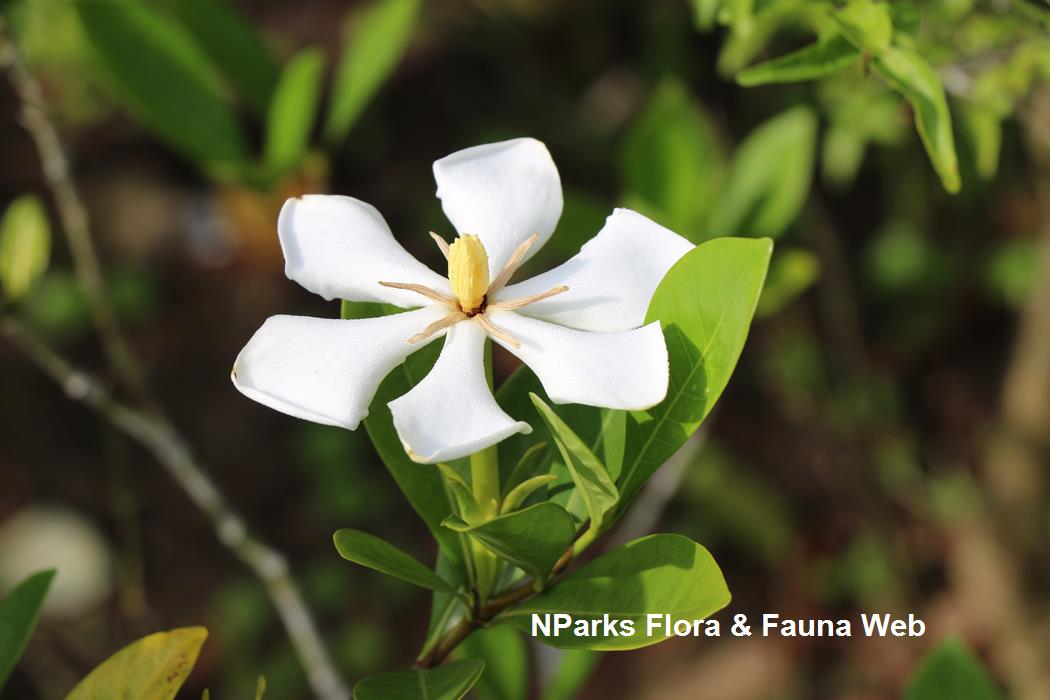
Name
Classifications and Characteristics
| Plant Growth Form | Shrub |
|---|---|
| Mode of Nutrition | Autotrophic |
Biogeography
| Native Distribution | Cape York Peninsular, Australia (Northern Queensland) |
|---|---|
| Native Habitat | Terrestrial |
| Preferred Climate Zone | Tropical |
| Local Conservation Status | Non-native |
Description and Ethnobotany
| Growth Form | Shrub about 1 - 3 m tall. |
|---|---|
| Foliage | Leaves green and having a rough surface, margin toothed, measuring about 9 - 27 cm long, petiole measuring about 0.4 - 0.9 cm long. |
| Flowers | Fragrant white flowers, both male and female flowers are on separate plants. |
| Fruit | Fruits are ellipsoidal in shape, measuring about 2.8 - 4.6 cm long and 1.8 - 3.2 cm wide, 6-ribbed, contains seeds which are papery. |
| Habitat | Usually found as an understory plant in undisturbed lowland rainforest. |
| Etymology | Genus Gardenia is named after Dr. Alexander Garden (1730 - 1791) , an American doctor who also studied plants and animals. Species actinocarpa means radiate-fruit. |
Landscaping Features
| Desirable Plant Features | Ornamental Flowers |
|---|
Fauna, Pollination and Dispersal
| Pollination Method(s) | Biotic (Fauna) |
|---|---|
| Seed or Spore Dispersal | Biotic (Fauna) |
Plant Care and Propagation
| Light Preference | Semi-Shade, Full Shade |
|---|---|
| Water Preference | Moderate Water |
| Propagation Method | Seed |
Foliar
| Foliage Retention | Evergreen |
|---|---|
| Mature Foliage Colour(s) | Green |
Floral (Angiosperm)
| Flower Colour(s) | White |
|---|
Image Repository
Others
| Master ID | 31313 |
|---|---|
| Species ID | 5710 |
| Flora Disclaimer | The information in this website has been compiled from reliable sources, such as reference works on medicinal plants. It is not a substitute for medical advice or treatment and NParks does not purport to provide any medical advice. Readers should always consult his/her physician before using or consuming a plant for medicinal purposes. |




